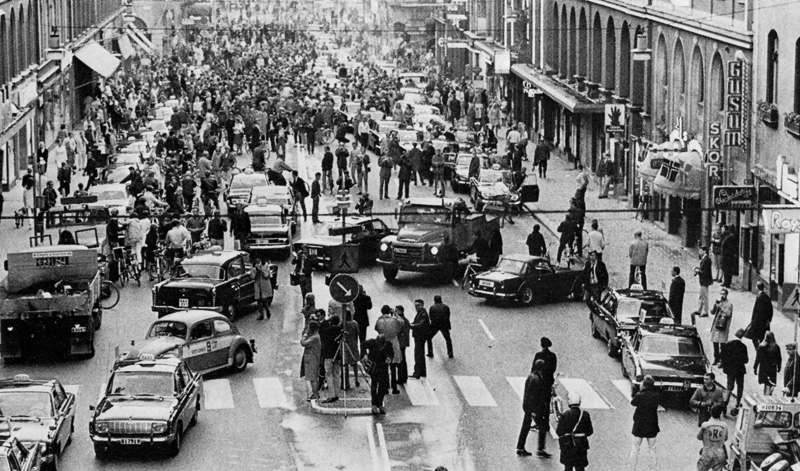

Swindon, England, 1998. On the Roman route of Blunsdon Ridge, archaeologists found that the lanes they had left on the road for the passage of cars were much deeper on one side than on the other. As the road led to a quarry and, therefore, the cars headed to the empty place and returned loaded, they concluded that the vehicles circulated on the left.
In ancient times, in Egypt, in Greece and in Rome at least, experts believed that horses and chariots tended to march on the left side of the roads, such as the British historian Cyril Northcote Parkinson (1909-1993).
As most of the horsemen and carriages were right-handed, they held the reins with their left hand and left the hand more open, if necessary, to use the sword. Car drivers also carried the whip or whip to the right, and driving on the left prevented involuntary bumps on the scooter's passersby.
In 1300, Bonifazio VIII.ak first established a traffic decree to solve the problems of the San Angelo bridge of access to the Basilica of San Pedro. At that point in the City of Rome, from there, he had to turn right.
But there were no fixed rules in Europe. In France before the revolution, for example, according to the classes, they were on one side or the other: the habit of going on the right was quite widespread, but nobility preferred to go on the left. In 1792 the revolutionary government approved the decree of driving on the right, but the Napoleon Army managed to bring this rule into force not only in France, but also in the conquered territories, such as the Netherlands, Poland, Switzerland and Spain.
Some say it was a whim of Bonaparte or a mastery gesture of the French army. Others were of the opinion that, at that time, the movement of troops was very frequent and that many times they were on the roads, going to the right and bringing weapons to the open helped to avoid internal dissensions. That is why leadership has been maintained on the left of the islands, such as the United Kingdom, Japan or Australia, where the troops usually moved by sea.
In the era of colonization, the differences were regulated by colonizers, and in the first half of the twentieth century normative unification and, therefore, the habit of driving on the right was generalized.
Today, in most countries you have to drive on the right, but it does not seem that the "left-wing" countries are going to change sides, although in 1967 the Swedes demonstrated that it can be done without major problems.